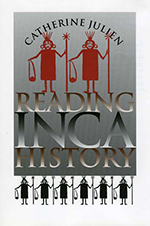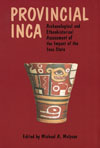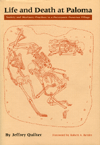Cobble Circles and Standing Stones
“Quilter is to be congratulated on his careful documentation of a meticulous and highly productive field project. . . . It is clear that he had numerous and considerable obstacles to overcome in his investigations at Rivas, but he dealt with these handily and has emerged with a valuable contribution to Central American archaeology.”—John Hoopes, University of Kansas, co-author of The Emergence of Pottery
“Jeffrey Quilter has written a masterpiece describing how archaeological projects happen. The fieldwork is easy—it is the family commitments, fundraising, professional relationships, foreign government, and foreign local community relations that are complicated to manage. This book should be required reading for students, especially those planning to go on international archaeological projects, as well as participants in Earth Watch and similar endeavors.”—Frederick W. Lange, Vanderbilt University
In this first-person tale of archaeological adventure in the tropical forest, Jeffrey Quilter tells the story of his excavation of Rivas, a great ceremonial center at the foot of the Talamanca Mountain range, which flourished between A.D. 900 and 1300, and its fabled gold-filled cemetery, the Panteón de La Reina. Beginning with the 1992 field season and ending with the last excavations in 1998, Quilter discusses Rivas’ builders and users, theories on chiefdom societies, and the daily interactions and surprises of modern archaeological fieldwork.
Writing in the first person with a balance between informal language and academic theory, Quilter concludes that Rivas was a ceremonial center for mortuary rituals to bury chiefly elite on the Panteón. Through use of his narrative technique, he provides the reader with accounts of discoveries as they occurred in fieldwork and the development of interpretations to explain the ancient refuse and cobble architecture his team uncovered. As his story progresses amid the enchantment of the Costa Rican landscape, research plans are adjusted and sometimes completely overturned as new discoveries, often serendipitous ones, are made. Such changing circumstances lead to new insights into the rise and fall of the people who built the cobble circles and raised the standing stones at Rivas, a thousand years ago.
The only book in English that focuses on a single archaeological site in Costa Rica, which continues to develop as a destination for archaeological tourism, Cobble Stones and Standing Circles will appeal to laypeople and professionals alike.






